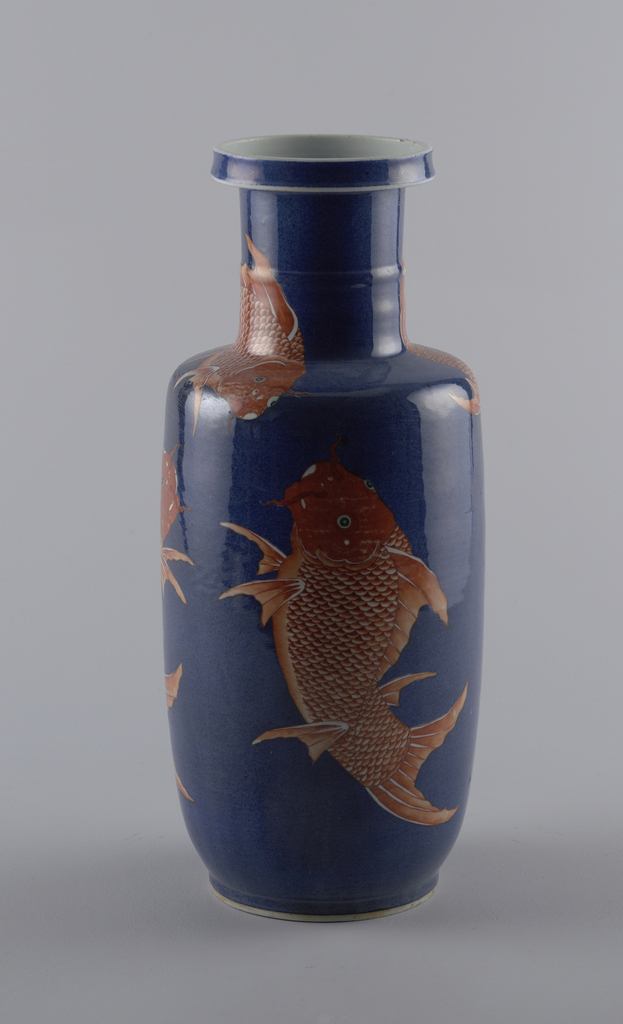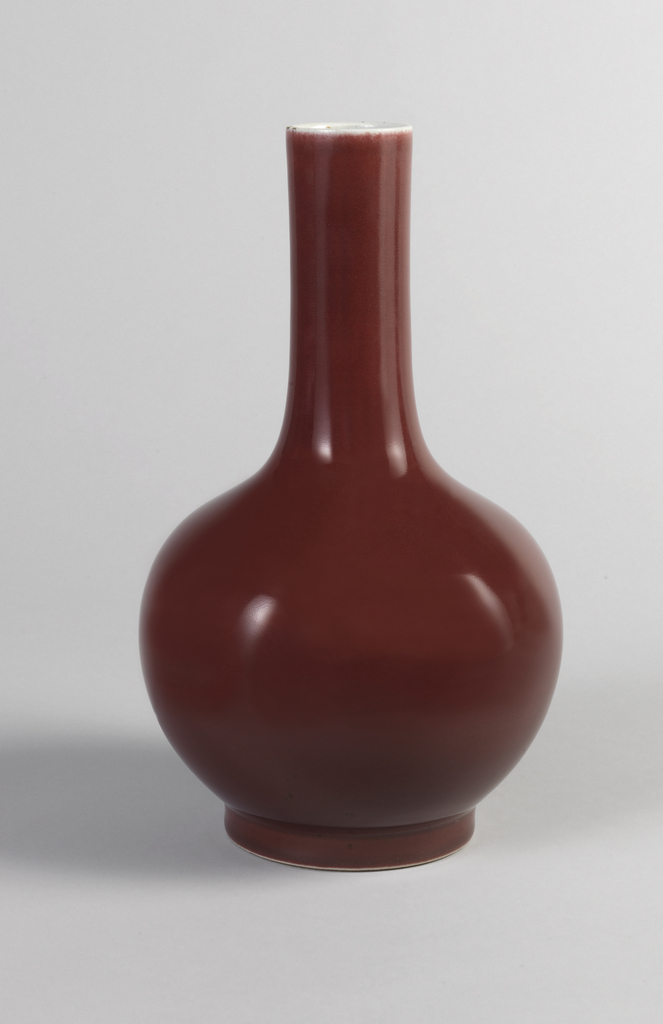Examples of Chinese Ornament Selected from Objects in the South Kensington Museum and Other Collections (figure 1) was written by Owen Jones (1809-1874), one of the most influential English architects, designers, and design theorists of the nineteenth century. Jones selected 100 full-color plates sourced from the motifs of Chinese ceramics, cloisonné works, and carpet designs,...
After nearly sixty years of inactivity, the kilns at Jingdezhen were restored by the Kangxi emperor around 1680. Considered to be one of the greatest Chinese emperors for the progress in the natural sciences and the arts China made under his rule, the Kangxi emperor reigned from 1662 to 1722. During this time, the Jingdezhen...
The deep red glaze on this porcelain vase is derived from copper, a metal which is notoriously difficult to control under the heat of a kiln. The distinct oxblood color is created when copper is starved of its oxygen during the firing (in a smoky, oxygen reduced kiln) and re-oxidized in the cooling. The resulting...


